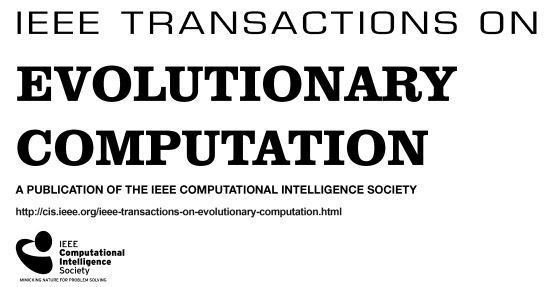进化Pareto集学习中结构约束的处理
IF 11.7
1区 计算机科学
Q1 COMPUTER SCIENCE, ARTIFICIAL INTELLIGENCE
引用次数: 0
摘要
在过去的几十年里,许多多目标进化优化算法(moea)被提出,用于在单次运行中找到给定问题的有限近似Pareto解集。然而,在许多实际应用程序中,可能希望对整个最优解决方案集具有结构约束,这些约束定义了所有解决方案之间共享的模式。目前以人口为基础的moea不能很好地满足这些需求。在这项工作中,我们首次尝试将结构约束合并到整个解决方案集中。具体来说,我们提出将多目标优化问题建模为具有结构约束的集合优化问题。结构约束定义了需要所有解决方案共享的一些模式。这些模式可以是所有解决方案共享的固定组件,决策变量之间的特定关系,以及所需的帕累托集形状。此外,我们开发了一种简单而高效的进化随机优化方法来学习集合模型,该方法只需要与经典moea相似的低计算预算。利用该方法,决策者可以很容易地在Pareto最优和偏好结构之间进行权衡,这是其他moea所不支持的。在基准测试套件和实际应用问题上的一系列实验证明了我们提出的方法是有效的。本文章由计算机程序翻译,如有差异,请以英文原文为准。
Dealing With Structure Constraints in Evolutionary Pareto Set Learning
In the past few decades, many multiobjective evolutionary optimization algorithms (MOEAs) have been proposed to find a finite set of approximate Pareto solutions for a given problem in a single run. However, in many real-world applications, it could be desirable to have structure constraints on the entire optimal solution set, which define the patterns shared among all solutions. The current population-based MOEAs cannot properly handle such requirements. In this work, we make a first attempt to incorporate the structure constraints into the whole solution set. Specifically, we propose to model such a multiobjective optimization problem as a set optimization problem with structure constraints. The structure constraints define some patterns that all the solutions are required to share. Such patterns can be fixed components shared by all solutions, specific relations among decision variables, and the required shape of the Pareto set. In addition, we develop a simple yet efficient evolutionary stochastic optimization method to learn the set model, which only requires a low computational budget similar to classic MOEAs. With our proposed method, the decision-makers can easily tradeoff the Pareto optimality with preferred structures, which is not supported by other MOEAs. A set of experiments on benchmark test suites and real-world application problems demonstrates that our proposed method is effective.
求助全文
通过发布文献求助,成功后即可免费获取论文全文。
去求助
来源期刊

IEEE Transactions on Evolutionary Computation
工程技术-计算机:理论方法
CiteScore
21.90
自引率
9.80%
发文量
196
审稿时长
3.6 months
期刊介绍:
The IEEE Transactions on Evolutionary Computation is published by the IEEE Computational Intelligence Society on behalf of 13 societies: Circuits and Systems; Computer; Control Systems; Engineering in Medicine and Biology; Industrial Electronics; Industry Applications; Lasers and Electro-Optics; Oceanic Engineering; Power Engineering; Robotics and Automation; Signal Processing; Social Implications of Technology; and Systems, Man, and Cybernetics. The journal publishes original papers in evolutionary computation and related areas such as nature-inspired algorithms, population-based methods, optimization, and hybrid systems. It welcomes both purely theoretical papers and application papers that provide general insights into these areas of computation.
 求助内容:
求助内容: 应助结果提醒方式:
应助结果提醒方式:


